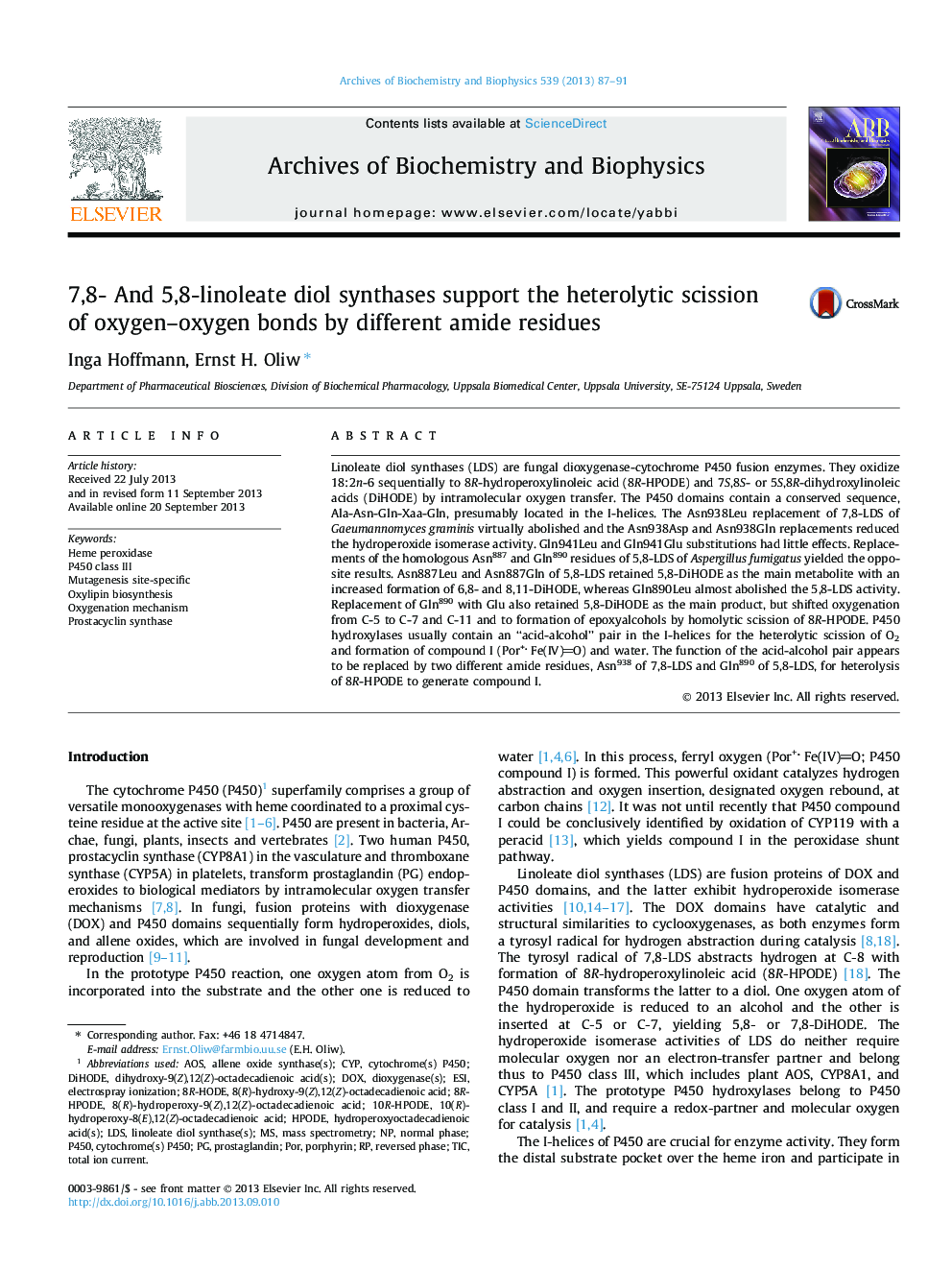| Article ID | Journal | Published Year | Pages | File Type |
|---|---|---|---|---|
| 8290565 | Archives of Biochemistry and Biophysics | 2013 | 5 Pages |
Abstract
Linoleate diol synthases (LDS) are fungal dioxygenase-cytochrome P450 fusion enzymes. They oxidize 18:2n-6 sequentially to 8R-hydroperoxylinoleic acid (8R-HPODE) and 7S,8S- or 5S,8R-dihydroxylinoleic acids (DiHODE) by intramolecular oxygen transfer. The P450 domains contain a conserved sequence, Ala-Asn-Gln-Xaa-Gln, presumably located in the I-helices. The Asn938Leu replacement of 7,8-LDS of Gaeumannomyces graminis virtually abolished and the Asn938Asp and Asn938Gln replacements reduced the hydroperoxide isomerase activity. Gln941Leu and Gln941Glu substitutions had little effects. Replacements of the homologous Asn887 and Gln890 residues of 5,8-LDS of Aspergillus fumigatus yielded the opposite results. Asn887Leu and Asn887Gln of 5,8-LDS retained 5,8-DiHODE as the main metabolite with an increased formation of 6,8- and 8,11-DiHODE, whereas Gln890Leu almost abolished the 5,8-LDS activity. Replacement of Gln890 with Glu also retained 5,8-DiHODE as the main product, but shifted oxygenation from C-5 to C-7 and C-11 and to formation of epoxyalcohols by homolytic scission of 8R-HPODE. P450 hydroxylases usually contain an “acid-alcohol” pair in the I-helices for the heterolytic scission of O2 and formation of compound I (Por+ Fe(IV)O) and water. The function of the acid-alcohol pair appears to be replaced by two different amide residues, Asn938 of 7,8-LDS and Gln890 of 5,8-LDS, for heterolysis of 8R-HPODE to generate compound I.
Related Topics
Life Sciences
Biochemistry, Genetics and Molecular Biology
Biochemistry
Authors
Inga Hoffmann, Ernst H. Oliw,
